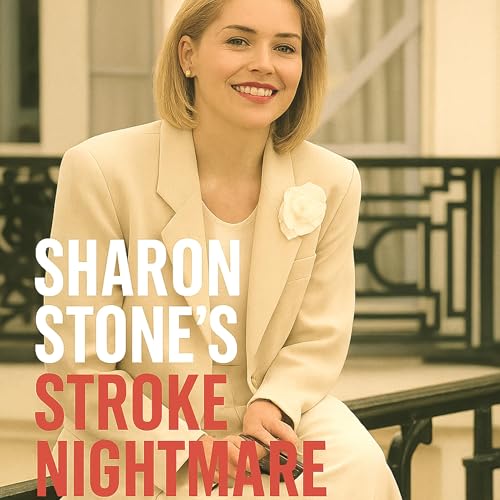This episode dives into the puzzling medical event where a patient, like actress Sharon Stone, seems to recover well from a severe brain bleed and is sent home, only to have their symptoms dramatically worsen days or weeks later.
This is part 3 of a series on Sharon Stone's terrifying medical emergency: a subarachnoid hemorrhage (a severe type of Hemorrhagic stroke).
BE FAST: Stroke Warning Signs
B – Balance
Sudden loss of balance or coordination.
E – Eyes
Sudden vision changes: blurred, double vision, or loss of vision in one or both eyes.
F – Face
Facial drooping or numbness on one side. Ask the person to smile—does it look uneven?
A – Arms
Arm weakness or numbness. Ask the person to raise both arms—does one drift downward?
S – Speech
Slurred speech or difficulty speaking/understanding. Ask them to repeat a simple sentence.
T – Time
Time to call 911 immediately. Do not wait—every minute counts.
Stroke symptoms appear suddenly. If you notice any of these signs—even if they go away—act fast. Every minute without treatment means millions of brain cells lost
This podcast episode was produced by Elton Sherwin from publicly available sources and generated using AI engines.
Disclaimer: These podcasts are for informational purposes only and is not a substitute for professional medical advice, diagnosis, or treatment. The hosts and AI engines consulted are not healthcare professionals and do not hold medical degrees.
AI-generated summaries may contain factual errors, omissions and mispronunciations. This information is intended solely as a conversation starter; it should never be relied upon as the sole basis for making medical decisions. Consult a licensed doctor or healthcare professional before making any health-related changes.
A subarachnoid hemorrhage (SAH) is a severe type of hemorrhagic stroke.
• SAH is a Type of Stroke: A subarachnoid hemorrhage is specifically classified as a life-threatening type of stroke caused by bleeding (hemorrhage) into the subarachnoid space—the area between the brain and the protective membranes that cover it.
• No Blood Clot Required: A stroke does not have to involve a blood clot. Strokes are broadly categorized into two main types based on their cause:
1. Ischemic Stroke (the most common type, about 87%), which is caused by a blood clot or blockage that cuts off blood flow to the brain.
2. Hemorrhagic Stroke (about 13% of cases), which is caused by a weakened blood vessel rupturing and bleeding into or around the brain tissue.
SAH is one of the two main types of hemorrhagic stroke, the other being intracerebral hemorrhage (bleeding within the brain itself). The most common cause of a spontaneous SAH is the rupture of a brain aneurysm, which is a weak, ballooned area in a blood vessel.
Cover art was AI generated by Microsoft’s copilot using a picture from Roland Godefroy adapted by Blofeld, CC BY 2.5, https://commons.wikimedia.org/w/index.php?curid=3531420art
 12 min
12 min 14 min
14 min Nov 17 20259 min
Nov 17 20259 min 8 min
8 min Oct 17 202515 min
Oct 17 202515 min Oct 17 20253 min
Oct 17 20253 min Oct 17 20258 min
Oct 17 20258 min Oct 17 202515 min
Oct 17 202515 min
